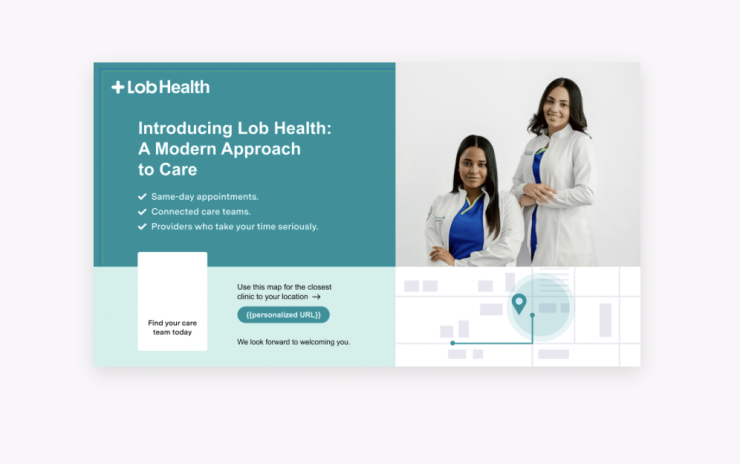How benefit leaders
Lob, a direct mail platform, connects with a business's data systems to create automated, customized mail. It takes the burden off of marketing and HR departments, and allows an employer and their benefit vendors to
"We're able to take things like images that [employees] viewed on your website or key dates that you have in your customer relationship management platform, like an open enrollment, and then use them as triggers to send a personalized mail piece based on the data you have," Ferrier explains. "Then on the back end, we operate a logistics and fulfillment network that both prints and delivers the mail."
Read more:
Benefit leaders can use Lob's template gallery or team up with one of Lob's design professionals to design their mailers and contribute to messaging. Its partnerships with 12 printers and logistics companies provide customers with a less expensive, fast delivery to the doors of recipients. Whether a company wants to send one piece or a million pieces of customized mail, they can do so in one day with the click of a button, Ferrier says.

At Lob, mailers are a trusted way to get the word out about its own new and established benefits. Ferrier cites a $120 per month health stipend offered to employees, and how mail communication is formatted and participation tracked. Because the workforce population skews younger, a card with a QR code is the mail method of choice, and gets sent out shortly after someone is hired and again to everyone as open enrollment approaches.
"The QR code would go to a landing page that explains all the different ways you can use this benefit," he says. "Then on the back end, we can track conversions for how many people scan that QR code, how many times that web page was visited, and then our ultimate metric is how many people are adopting this benefit. And at the end of every month, we reconcile how many employees expense that health care receipt. We can track [data] just like you would [with digital communication], the difference being that this has a higher open rate than email and has better conversions."
Read more:
The case for tangible benefits communication
Sending timely messages through the mail, such as a reminder about upcoming enrollment dates, welcoming a new hire, or a new benefit being offered, helps round out other forms of communication such as emails, links to websites and short online videos. Employees come to know that these are important parts of their decision-making process for health and other areas, and the stats on engagement are positive: Research shows that direct mail has an open rate of 70-90%, compared with emails, which have an open rate of 20-40%.
Ferrier points out that, with today's advanced technology tools, personalization goes beyond putting someone's name on mail. Demographics such as age, geographic location and family dynamics can all be used to send the most applicable benefit information. Different calls to action can be sent to people in different cities, for example, or fertility benefit information can be sent just to employees who fall into eligible categories, rather than the entire workforce, he says.
Benefit leaders also can use this information to figure out what kind of mailers — postcards, letters, etc. — their demographics gravitate toward most. No matter the format, links, QR codes and phone numbers can be included for people to easily access further information.
"We're looking at timeliness and then relevance for your customer or employee base," Ferrier says. "For instance, if we know that somebody is turning 26 and has to age off of their parent's healthcare, [these benefits are] hyper relevant. We can send them all sorts of key dates to be aware of and benefits at a glance."
Read more:
By adding customized direct mail to a benefits communication strategy, leaders can potentially improve education and utilization, track engagement with their offerings, and strengthen employees' impression of their company.
"We're trying to send the right piece of mail at the right time to create some real connection between a brand or an employer and their employee base," says Ferrier. "If you have communication that you really want to get through, direct mail as a channel builds trust."
Read more about employee benefits communication:





